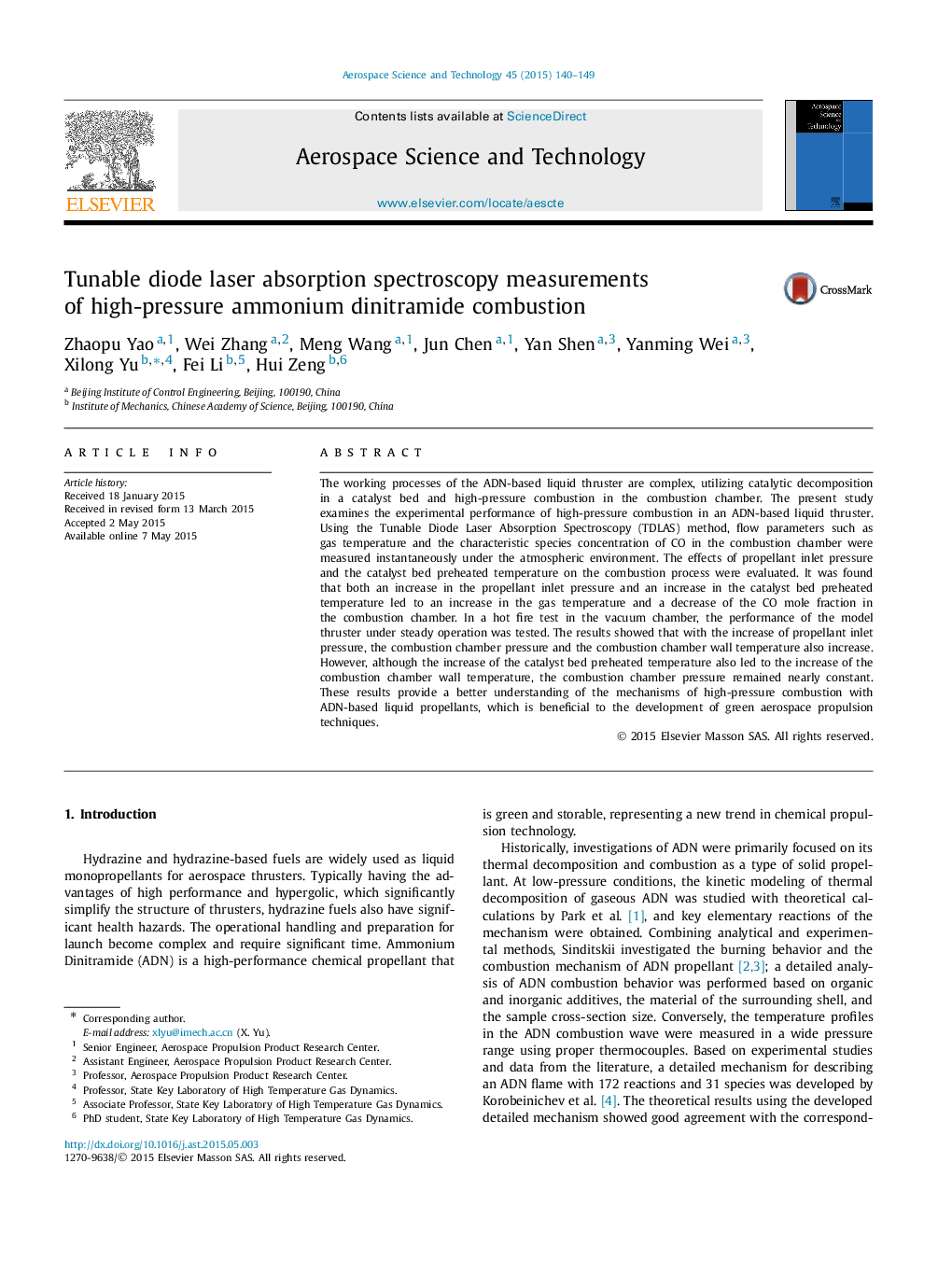| Article ID | Journal | Published Year | Pages | File Type |
|---|---|---|---|---|
| 1717800 | Aerospace Science and Technology | 2015 | 10 Pages |
The working processes of the ADN-based liquid thruster are complex, utilizing catalytic decomposition in a catalyst bed and high-pressure combustion in the combustion chamber. The present study examines the experimental performance of high-pressure combustion in an ADN-based liquid thruster. Using the Tunable Diode Laser Absorption Spectroscopy (TDLAS) method, flow parameters such as gas temperature and the characteristic species concentration of CO in the combustion chamber were measured instantaneously under the atmospheric environment. The effects of propellant inlet pressure and the catalyst bed preheated temperature on the combustion process were evaluated. It was found that both an increase in the propellant inlet pressure and an increase in the catalyst bed preheated temperature led to an increase in the gas temperature and a decrease of the CO mole fraction in the combustion chamber. In a hot fire test in the vacuum chamber, the performance of the model thruster under steady operation was tested. The results showed that with the increase of propellant inlet pressure, the combustion chamber pressure and the combustion chamber wall temperature also increase. However, although the increase of the catalyst bed preheated temperature also led to the increase of the combustion chamber wall temperature, the combustion chamber pressure remained nearly constant. These results provide a better understanding of the mechanisms of high-pressure combustion with ADN-based liquid propellants, which is beneficial to the development of green aerospace propulsion techniques.
